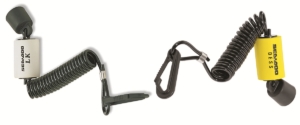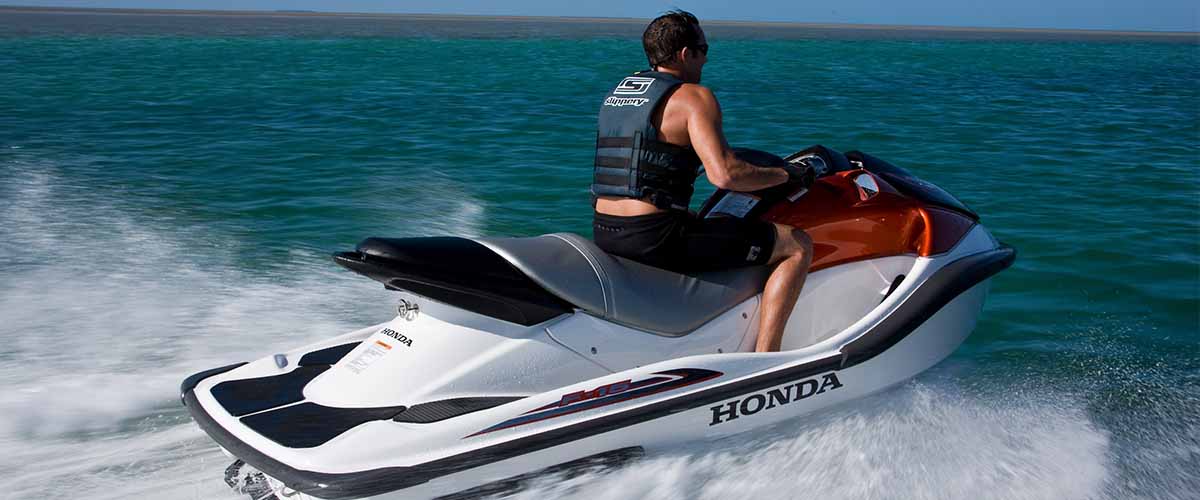What is MPEM and ECU on a Sea-Doo? [Explained]
On 4-stroke Sea-Doos, the ECU (Engine Control Unit) is the main computer, which is actually the “brain” of the machine, while the MPEM (Multi-Purpose Electrical Module) is the fuse panel. In contrast, vintage 2-stroke Sea-Doos lacked an ECU, so their main controller unit was the MPEM.
If you want to find out more about these mysterious units, keep reading.
We at JetDrift have compiled all you need to know under one roof!
What is an MPEM on a SeaDoo?
On vintage 2-stroke Sea-Doos, the engine controller and the main electrical module were merged into one unit, called the MPEM (Multi-Purpose Electrical Module). This feature was responsible for controlling various functions, including:
- Start/stop function
- Distributing information
- Interpreting information
- Timer
- Ignition timing curve
- Engine rev limiter
- Gauges’ current supply
- Digitally Encoded Security System
It’s safe to say that the MPEM controlled Sea-Doo’s entire electrical system using an internal microprocessor.
This unit was a black plastic box located in a larger gray electrical box along with the rectifier, starter relay, fuses, and the CDI unit. Some fuses were mounted onto the MPEM, while others were placed on a separate panel.
Also, the MPEM played an anti-theft role as each Sea-Doo’s D.E.S.S. key must be programmed to this unit. The unit’s internal memory was intended to keep the D.E.S.S. key active and store vehicle information.
Vintage 2-stroke Sea-Doos lacked large displays, so their computer couldn’t use fault codes to communicate with the rider. Instead, the MPEM on these skis generated various beep code patterns to indicate problems and malfunctions.
For example, the MPEM generated a continuous beeping sound when the engine was overheating.
Since the MPEM gave access to the entire info center, the ski’s gauges could be read without the engine running.
What is ECU on a Sea-Doo?
Generally speaking, the ECU (Engine Control Unit) is the successor of the MPEM unit on 2-stroke Sea-Doos. On modern 4-stroke Sea-Doos, the electrical system and the engine are controlled by the ECU, while the MPEM was downgraded to a simple fuse panel.
The ECU on Sea-Doos is often referred to as an ECM (Engine Control Module), but these terms name the same thing. For a better understanding, we’ve included the presence of these features in one chart:
| Type of Sea-Doo | ECU (Engine Control Unit) or ECM | MPEM (Multi-Purpose Electrical Module) |
|---|---|---|
| 2-Stroke | No | Yes (Role: main control unit) |
| 4-Stroke | Yes (Role: main control unit) | Yes (Role: use panel) |
This means that on 4-stroke Sea-Doos, the machine’s “brain” is already the ECU to which the D.E.S.S. key has to be paired. It is also responsible for engine management, including throttle control, timing, and RPM limits.
Besides these roles, virtually every electrical system like trim and iBR goes through the ECU.
In contrast, the MPEM on 4-stroke Sea-Doos is just a box housing the fuses and relays.
The systems on 4-stroke Sea-Doos are more complex compared to their 2-stroke predecessors, which is why the manufacturer moved engine management into a separate ECU unit.
These modern machines are also equipped with more advanced gauges and dashboards. In case of a system failure, the ECU can indicate the problem by displaying fault codes on these screens.
By attaching a laptop to the ECU with a special cable (and software), the internal memory can also reveal the “history” of the machine from the records of the fault codes to the way of use.
This is why dealers read the ECU of each Sea-Doos in case of any malfunction. The history clearly reveals how the rider treated and handled his/her machine!
Related Questions
As a takeaway, we’ve answered the most common questions about Sea-Doo MPEM and ECU.
What Does MPEM Mean?
The acronym MPEM stands for “Multi-Purpose Electrical Module” on Sea-Doos.
On 2-stroke models, the MPEM was the main engine controller, while on the 4-stroke crafts, this unit is a fuse box.
What Does ECU Mean?
The acronym ECU stands for “Engine Control Unit” on Sea-Doos.
As the name suggests, this unit controls the engine and other electrical systems. The ECU is a mini-computer with built-in memory, and is considered the “brain” of Sea-Doos.
Where is the MPEM Located on a Sea-Doo?
On 2-stroke Sea-Doos, the MPEM is located in the grey electrical box.
This box may be fixed in various places inside the hull, depending on the model. (On many Sea-Doos, it’s placed towards the front of the hull.)
How Can You Test the MPEM on a Sea-Doo?
Sea-Doo’s MPEM offers two different diagnostic modes. The basic mode is automatically activated when you touch the D.E.S.S. key cap to the switch. In contrast, you can only activate the “advanced mode” when pressing the start/stop switch. For more specific information, please refer to the operator’s manual.
Can You Bypass MPEM/ECU on a Sea-Doo?
Since the MPEM/ECU is the anti-theft and the engine control unit (including the ignition control), it can’t be bypassed.
Where is ECU Located on a Sea-Doo?
The ECU on Sea-Doos is typically mounted on top of the intake manifold near the throttle body. You can see two large wiring harness connectors plugged into it.
DISCOVER 2024 PWC MODELS Kawasaki, Sea-Doo, Yamaha, Krash…








